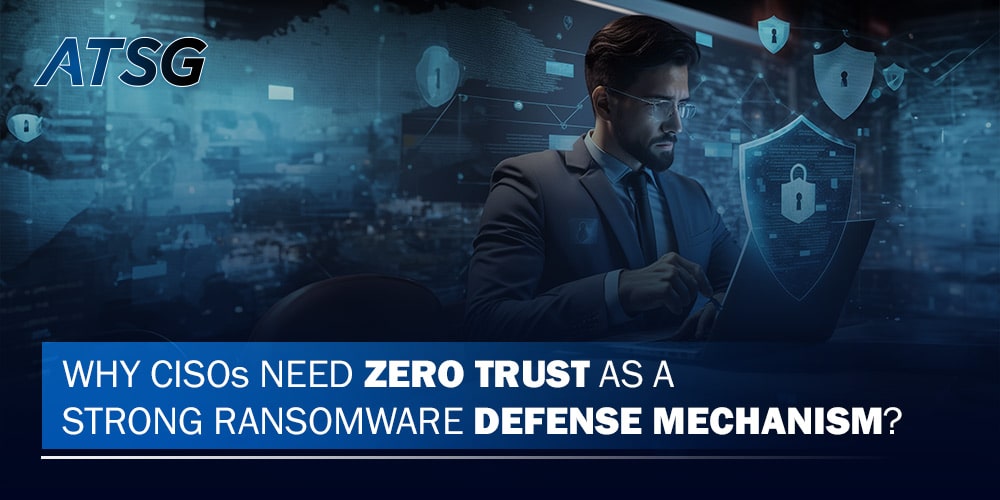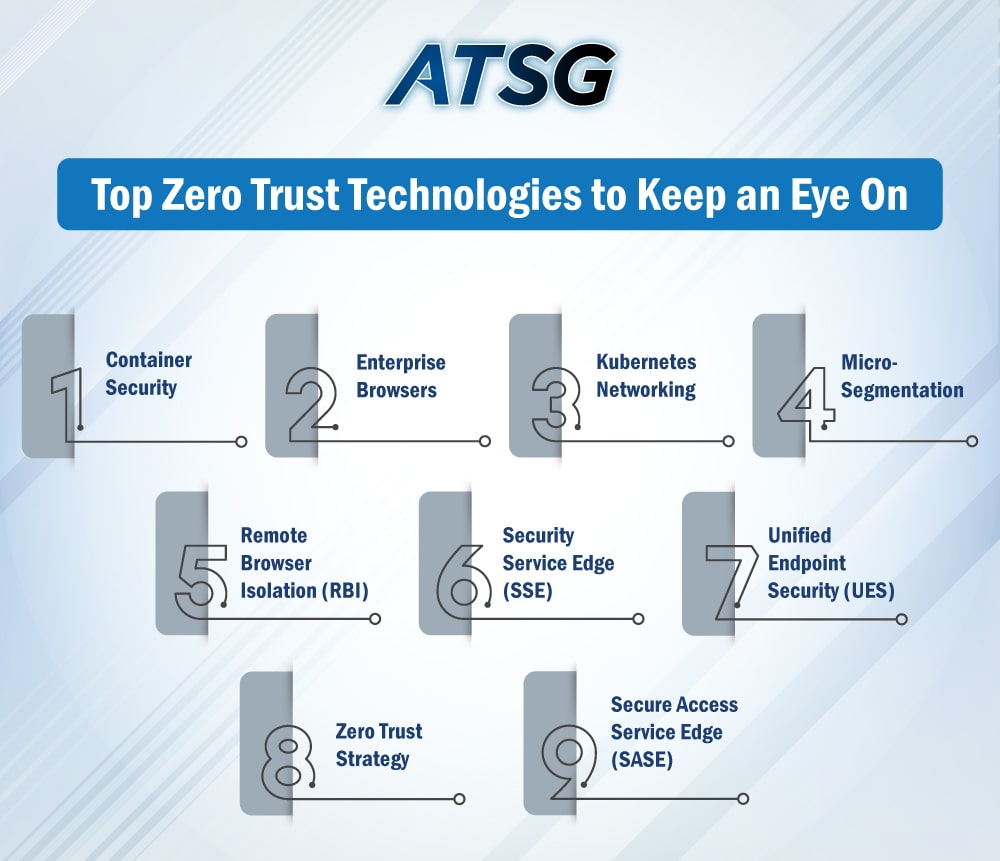In 2023, ransomware attacks have surged, making it one of the costliest years for cyber threats. Alarmingly, attackers are now more sophisticated, blending advanced social engineering with weaponized AI.
To counter this, CISOs should adopt a Zero Trust security approach, operating under the assumption that breaches have already happened. Instead of fixating on the breach, the focus should shift to strengthening defenses. Embracing Zero Trust enables enterprises to actively protect their digital assets against evolving threats.

How Zero Trust Thwarts Ransomware Attacks?
Zero trust challenges the traditional concept of digital “trust,” emphasizing that users, devices, and applications shouldn’t be trusted blindly. It operates on the premise that trust might be compromised and uses identity verification, authentication, and contextual evaluation for trust establishment.
Recognized by progressive CISOs as more than just a technology, zero trust forms the foundation of a security ecosystem. It conceals digital assets from the public internet, uses deep packet inspection for threat detection, and employs AI-backed platforms to counter phishing.
Additionally, it restricts attackers’ lateral movements, minimizing potential damage. Recognized globally, CISOs are adopting zero trust to stay ahead of cyber threats.
Related Posts:
- How DRaaS Ensures Business Continuity Against Cyber Threats
- Understanding the Financial Impact of Cyber Threats
- Distinguishing Between Cloud Security and Cyber Security
Top Zero Trust Technologies to Keep an Eye On
In the following points, we spotlight key technologies that, when integrated with a Zero Trust strategy, not only enhance security, but also fortify defenses against ransomware and other cyber threats.

1. Container Security
Container security plays a vital role in improving digital defenses. Specialized tools for developers that design containers, play an instrumental role in the early detection of vulnerabilities and any mis-configurations. Their primary objective is to safeguard against potential threats that come from exposed containers, and compromised images during runtime.
These capabilities make container security a technology of significant value in the realm of Zero Trust. We say that because it offers proactive protection and early threat detection, perfectly aligning with the core principles of Zero Trust security.
2. Enterprise Browsers
Enterprise browsers work by streamlining access and mitigating the threat of malicious websites or downloads. Their role is increasingly crucial in an era of remote work, particularly because they cater to dispersed workforces.
With granular policy control over web content, downloads and extensions, overall security is drastically improved. Their integration with Zero Trust frameworks also enhances overall digital defenses, making them a technology of great significance.
3. Kubernetes Networking
Kubernetes networking addresses the demands of visibility, security and scalability, within such environments. With essential capabilities, such as multi-cluster connectivity and load balancing, it assumes a pivotal role in re-enforcing the Zero Trust approach to cybersecurity.
4. Micro-Segmentation
Micro-segmentation significantly enhances a Zero Trust strategy, by enforcing strict identity-based access policies. It limits lateral movement after potential breaches, ensuring that even if one part of the network or infrastructure is compromised, the rest remains secure and operative.
5. Remote Browser Isolation (RBI)
RBI is another key Zero Trust technology to keep an eye on. It plays a crucial role by isolating web browsers, which significantly reduces the vulnerable areas that attackers can potentially exploit, including threats like phishing attempts and data breaches.
What’s exciting is that there are ongoing advancements dedicated to refining isolation techniques, and then seamlessly integrating RBI with other security solutions. This continuous evolution makes RBI a valuable asset in the world of Zero Trust security.
6. Security Service Edge (SSE)
SSE unifies a broad spectrum of security components. This is done by ensuring the protection of web applications, SaaS platforms and private apps, while preserving a harmonious and well-organized system. SSE’s role aligns seamlessly with the principles of Zero Trust, by emphasizing comprehensive security within a Cloud environment.
7. Unified Endpoint Security (UES)
UES serves as a reliable partner for endpoint protection and management. It’s primary focus revolves around making informed security decisions, from prioritizing patches to continuously evaluating endpoint configurations.
Within the Zero Trust paradigm, UES plays a vital role in improving the security of employee endpoint devices, whether company owned or personal. This aligns perfectly with the overarching principles of trust verification, and threat mitigation.
8. Zero Trust Strategy
The “anchor” of your Zero Trust voyage is your strategy. It is the guiding principle which ensures that you are always one step ahead, by developing a customized strategy in accordance with your enterprise needs. Remember, your zero-trust strategy should align seamlessly with the goals and risk tolerance of your enterprise.
9. Secure Access Service Edge (SASE)
Finally, we have SASE, which offers diverse cybersecurity capabilities across various deployment models and technology platforms, including Zero Trust. An effective SASE solution unifies and integrates cybersecurity mechanisms, thus eliminating the siloed approach to enterprise security.
Conclusion
In the challenging ransomware landscape of 2023 and beyond, a Zero Trust approach offers CISOs a resilient defense strategy. ATSG, a leading Managed Service Provider, specializes in Zero Trust Architecture, enhancing enterprise defenses. They also offer tailored Cybersecurity Strategy Formulation and Layered Application Security for comprehensive protection. With ATSG’s Managed Detection and Response, threats are promptly addressed, ensuring proactive defense. CISOs can rely on ATSG’s vast expertise and certifications in managed IT, cloud computing, and cybersecurity to confidently tackle today’s cyber threats.




